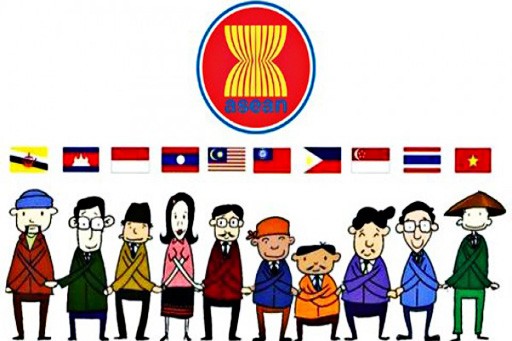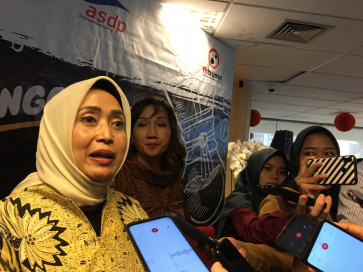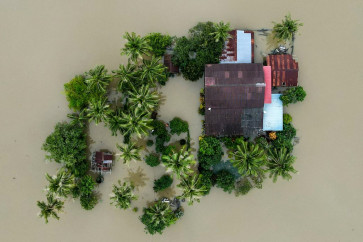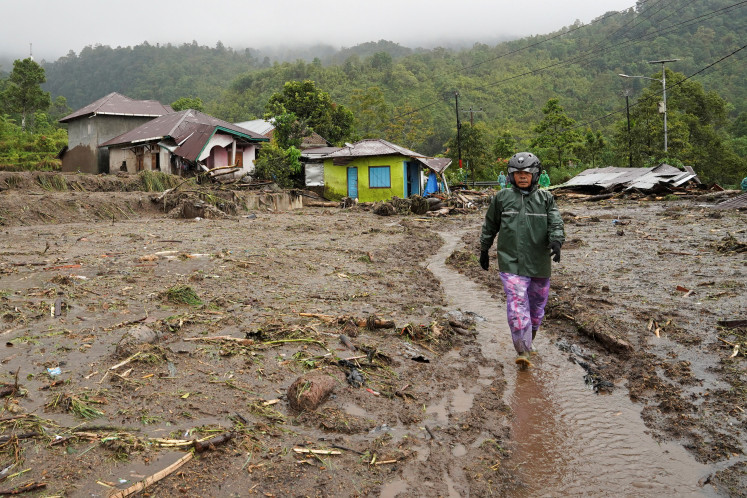Popular Reads
Top Results
Can't find what you're looking for?
View all search resultsPopular Reads
Top Results
Can't find what you're looking for?
View all search resultsPeople-centered ASEAN: From mantra to reality
As a rough estimate, I dare say that out of ASEAN’s population of more than 600 million, fewer than 1 percent have some degree of comprehension about ASEAN beyond name recognition.
Change text size
Gift Premium Articles
to Anyone
I
n recent years, ASEAN has embarked on a new path based on a mantra about achieving a “people-centered, people-oriented ASEAN Community”. This began with the ASEAN Charter in 2005, the first ASEAN document that began with “We, the peoples...”
The reality on the ground, however, is that ASEAN still has a long way to go to become a truly people-centered community. While Southeast Asian citizens are aware of the existence of ASEAN, and generally do not have a negative attitude toward the organization, many are clueless as to what it is all about.
I once asked a group of international relations students in a top Indonesian university what they knew about the ASEAN Economic Community, and received no show of hands. I have repeated this exercise many times at other universities with similar results.
Indeed, the main problem of ASEAN is that many of its parts do not know one another. There are tens of thousands of civil society groups in ASEAN; most of them do not connect with one another.
Most micro small and medium enterprises (MSMEs) in any ASEAN country do not do business with those in any other regional country. In Indonesia, the largest economy in ASEAN, there are plenty of provinces, regencies and cities that have no trade links with their counterparts in any other ASEAN country.
As a rough estimate, I dare say that out of ASEAN’s population of more than 600 million, fewer than 1 percent have some degree of comprehension about ASEAN beyond name recognition.
The average Southeast Asian still feels that ASEAN is the business of diplomats and leaders at the top and are happy to leave it at that.
Meanwhile, the ASEAN Peoples’ Forum/ASEAN Civil Society Conference (ACSC/APF), a movement of civil societies that began in 2005, is still struggling to be heard and to gain relevance. In 2016, the ACSC/APF released a joint statement expressing deep frustration about “ASEAN’s prevailing silence and lack of attention and response to the observations and recommendations raised in all previous ACSC/APF statements”.
More recently, just before the 42nd ASEAN Summit this year, the group voiced this lament: “As an institution that claims to be ‘people-centered’ and ‘people-oriented,’ ASEAN has failed to address the concerns of its people, especially those of the most marginalized”.
Against this backdrop, ASEAN leaders need to take a serious look at how they want to proceed with a “people-centered ASEAN” and ask hard questions why their people-to-people relations remain sluggish after all these years.
And today, some 25 years after the ASEAN Charter came into force, it is time to revisit and ascertain the real meaning of “people-centered” ASEAN. Does it mean ASEAN policies must simply benefit the regional peoples but based on a “father-knows-best” approach? Or does it also mean a more open policy environment, which gives adequate space for bottom-up participation by ASEAN peoples?
The latter means ASEAN must be willing to engage in constant and meaningful conversations with civil society groups, even though the exercise may sometimes turn uncomfortable.
ASEAN also needs to re-evaluate its structural arrangements with civil societies. Presently, under the ASEAN Charter, the task of working with “civil societies, business sector, academia and other stakeholders” is left in the hands of the ASEAN Foundation. But the reality of the last two decades tells us that the ASEAN Foundation lacks the standing, capacity and resources to effectively perform the role of focal point for civil societies in ASEAN.
Beyond this, ASEAN must also encourage the proliferation of bottom-up ASEAN-wide independent civil society initiatives. In this regard, mindful of the region’s academic deficit where university research is scarce and many campuses do not have access to high-quality lectures, the Foreign Policy Community of Indonesia (FPCI) has launched an initiative to provide access to online lectures by world-class scholars for students at universities in ASEAN countries plus Timor-Leste. Now 50 campuses in ASEAN have joined in and the target is to expand its coverage to 200 universities in the coming years.
Most importantly, ASEAN should undertake a serious and sustained campaign to socialize ASEAN to as many layers and segments of the regional population as possible. The ASEAN Socio-Cultural Community should be retooled: its official “Blueprint 2025” contained plenty of references to natural disasters, human rights, biodiversity, livable cities, but oddly no game plan to actually enhance “people-to-people” connections.
There should be an intensive effort to expand the number of civil society groups accredited to ASEAN by making sure that the process of qualifying for inclusion is not too cumbersome. It should welcome even those who are critical of the organization’s performance. The present number of “ASEAN entities”, CSOs officially affiliated with ASEAN, which is around 48, is way too small for a regional organization that serves 600 million people.
ASEAN must also launch an ambitious medium-term “Know ASEAN” campaign, to be conducted by the ASEAN Secretariat. This campaign must have a permanent tagline, distinct from the constantly changing tagline adopted by ASEAN’s annually rotating chairs. (The slogan “one vision, one identity, one community” sounds good to diplomats and officials but does not appeal to the general public).
The strategy of this campaign must be crafted professionally, based on periodic surveys that measure the deficit in public perception of ASEAN. The cost of this campaign should be borne by ASEAN’s 10 (soon to be 11) member states, with each contributing US$1 million to $5 million a year to the campaign’s budget. If ASEAN governments are serious about achieving a people-centered ASEAN, this should not be too much of a burden.
There is more. The Southeast Asia Games should be renamed the “ASEAN Games”. ASEAN Centers should be established in universities and their programs subsidized or funded by the national governments. The ASEAN Secretariat should pursue a dedicated program to connect the millions of ASEAN MSMEs and open their eyes to business opportunities in the region.
The bottom line is that there can be no "ASEAN identity" unless the regional peoples know the organization well enough, appreciate its relevance to their lives and feel that they have “ownership” of ASEAN.
Ambassador Barry Desker, a seasoned Singaporean diplomat, struck an urgent note when he said: “Commitment to ASEAN exists only among policy-makers, academics and journalists and those who participate in ASEAN-related activities […] By contrast, for people living in Southeast Asia, the idea of a community with shared values toward a shared destiny remains a wish to be done”.
He is right. In the final analysis, the main challenge to the ASEAN Community is not just about preserving ASEAN’s “centrality” in regional affairs; it is also, more importantly, about deepening ASEAN’s credibility in the hearts and minds of its own peoples, meaning the grassroots and civil society in each individual ASEAN country.
This is the only way ASEAN can become resilient and thrive in the 21st century.
***
The writer is founder and chairperson of the Foreign Policy Community of Indonesia (FPCI).










